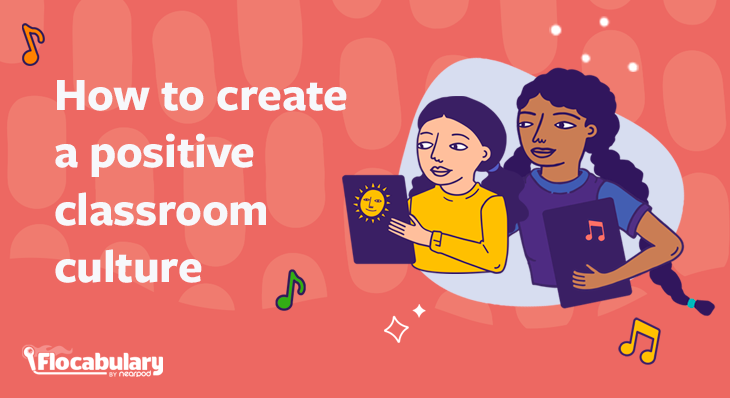
How to create a positive classroom culture
Lessons. Whether they happen in class or in life, lessons are needed to make the world a better place. A dynamic and positive classroom culture sets the stage for effective teaching and learning and prepares our youth to better shape our future.
In my experience, building classroom culture and student-teacher rapport has been instrumental in achieving many milestones.
But just how do we do that? One of my favorite quotes, by Maya Angelou, states, “I’ve learned that people will forget what you said, people will forget what you did, but people will never forget how you made them feel.” This simple statement personifies the importance of classroom culture activities.
What is a positive classroom culture?
A positive classroom culture is described as a non-threatening one where teachers promote a supportive learning environment that thrives on student empowerment to boost student achievement. In such a learning scenario, students feel valued, safe, and respected by all.
Why is a positive culture important in the classroom?
Classroom culture greatly impacts students’ academic performance, social-emotional development, and overall self-image. This motivates students to take risks and actively participate in their own learning journey and those of their peers.
Finally, the positive culture also impacts students’ social skills, empathy, and ability to work with people regardless of their race, age, sex, or gender. As you can see, the benefits of creating this type of learning experience for students are limitless.
New to Flocabulary? Teachers can sign up for a trial to access our lesson videos and assessment activities. Administrators can get in touch with us to learn more about unlocking the full power of Flocabulary through Flocabulary Plus.
How to create a positive classroom culture
1. Build positive relationships
Building positive relationships is paramount to cultivating culture. It’s important teachers get to know their students as individuals by genuinely showing an interest in their lives, areas of strength, and, just as importantly, their areas of challenge. This idea isn’t new to the educational arena. President Theodore Roosevelt once said, “No one cares how much you know until they know how much you care.” When students know you’re their biggest cheerleader, they’re empowered to want to be greater.
One of the biggest strengths of Flocabulary is the plethora of interactive activities that offer learning opportunities to showcase students where they excel. While one student might shine on the very straightforward Read & Respond or Quiz activity, another might perform just as well, if not better, using the Vocab Card for drawing or the Vocab Game for making beats by answering questions pertaining to the lesson accurately.
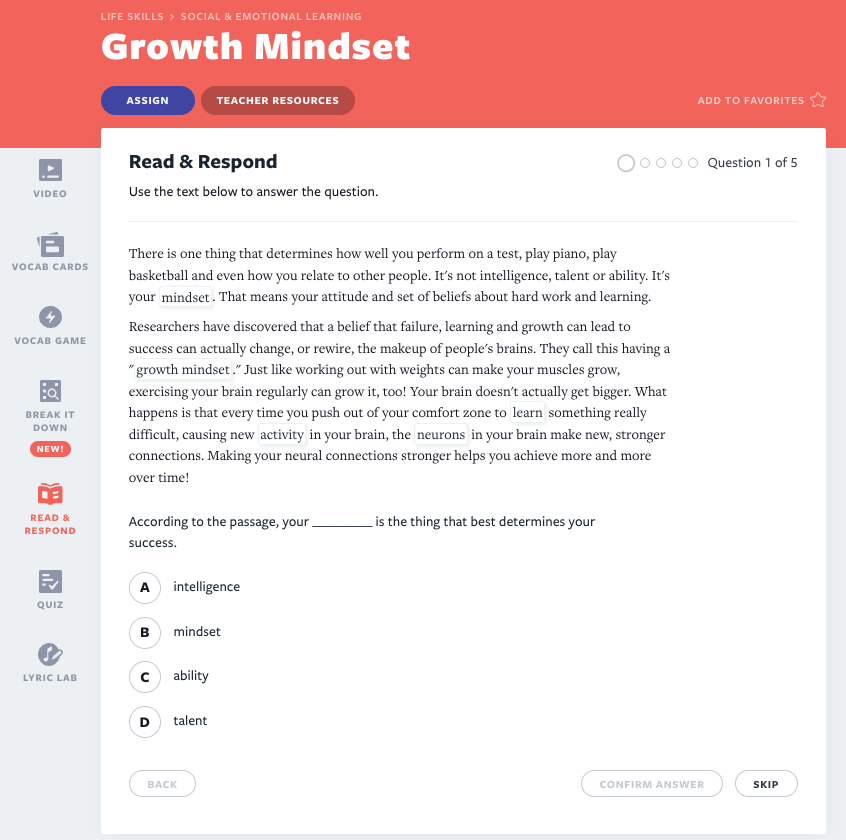
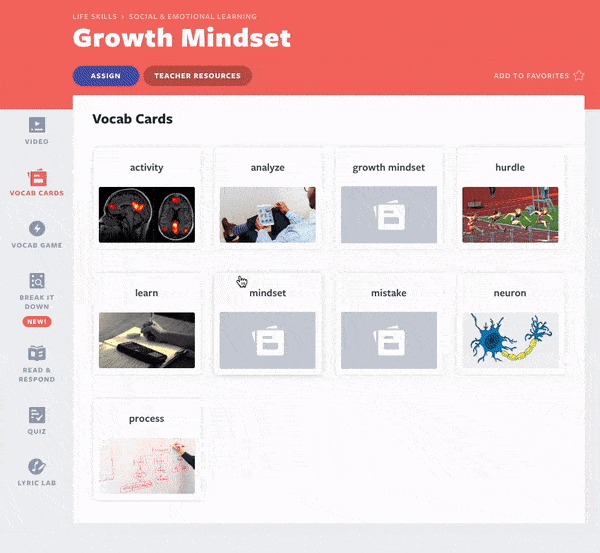
2. Set clear expectations
Setting clear classroom expectations creates a sense of structure and predictability for students. We already know many of our students disconnect from assigned lessons when they don’t have a reliable structure in place. Flocabulary does a great job of building students’ comprehension and vocabulary acquisition skills using step-by-step and easy-to-follow instructions throughout.
One example of this can be found in the Lyric Lab activity, where students see lesson-specific vocabulary words meant to be used to create an original rhyme. Not only are the words provided to them, but as they use each one in their original rhyme creation, the words are highlighted to signal to them that it’s been used. Furthermore, students can simply click on words that they may have forgotten the meaning of to help them better use the word during the creative phase of this activity. Finally, you can customize the writing prompt in the Lyric Lab feature to meet the needs of all students while maintaining a sure method of relaying clear and specific instructions for students to follow. Based on the group’s or individual’s needs, you can write as little or as much as you like in terms of directions.
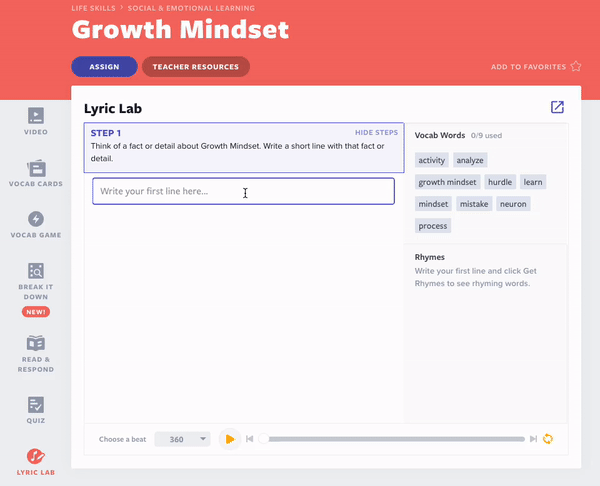
3. Open communication
Open communication is critical for safe and inclusive spaces; students should feel comfortable sharing thoughts, opinions, and concerns. Active listening and respectful dialogue are necessary for a positive culture in the classroom. Teachers should model this in each and every student interaction.
Flocabulary offers a Life Skills lesson collection designed to promote positive culture words essential for helping students build character. You can find several examples in the Racial and Social Justice and Social and Emotional Learning sections. Topics like Managing Worry, Culture, and Active Listening are just a couple of true and tested winners.
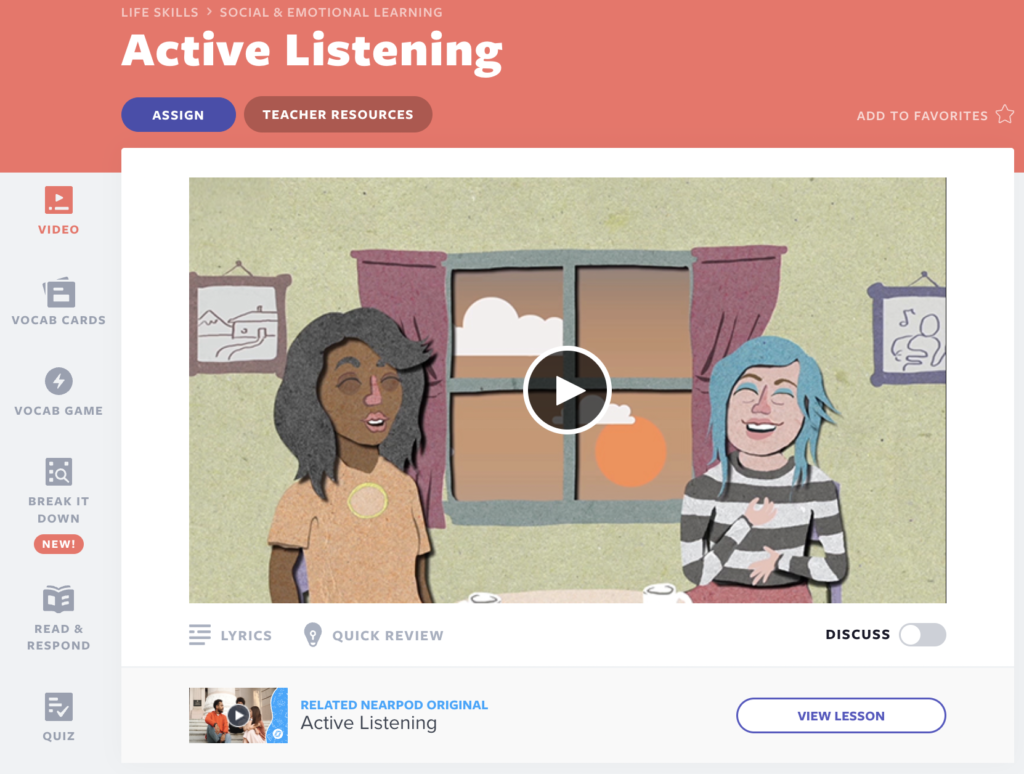
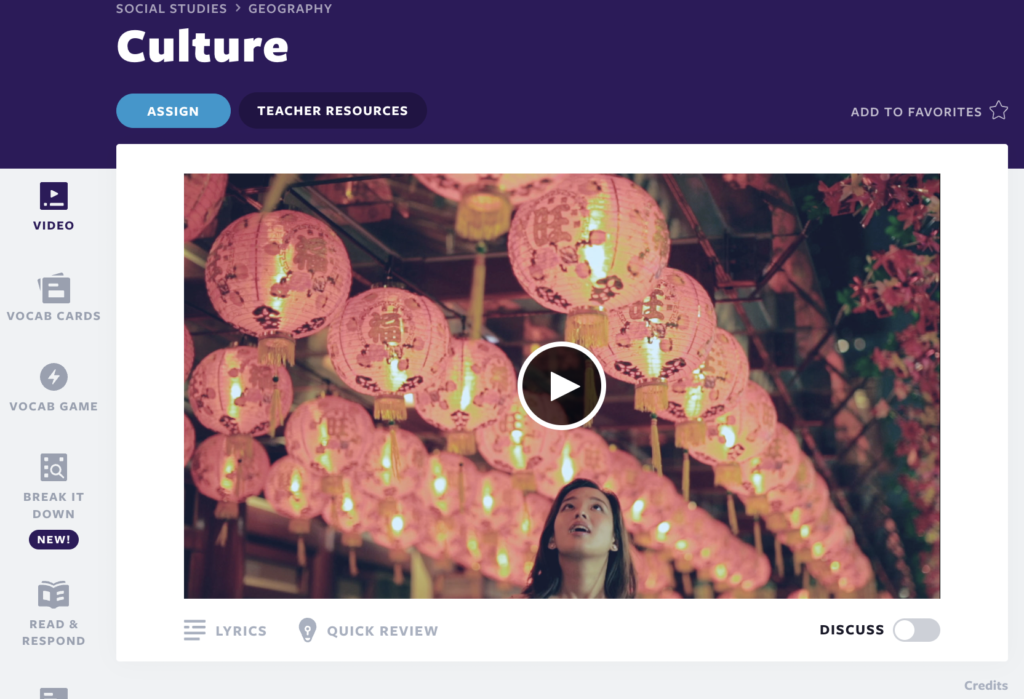
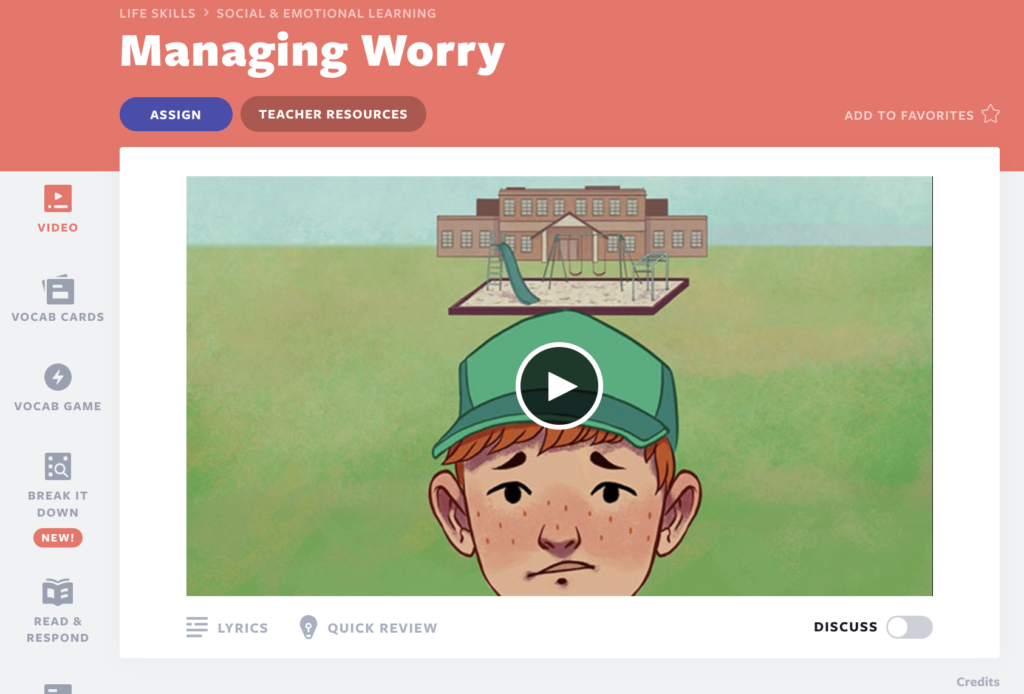
Watch out Managing Worry video below! To access the full lesson, sign up for Flocabulary!
Here’s an example of the engaging videos you can find on Flocabulary!
4. Growth mindset
Emphasizing a growth mindset instills a sense of confidence in your students by highlighting the power of learning from one’s mistakes. A growth mindset builds resilience, courage, and confidence. Like Aaliyah said, “… if at first, you don’t succeed, Then dust yourself off and try again…”
One strategy: use Flocabulary’s Growth Mindset video lesson! This song teaches students that to improve in any part of their life, they need to know the value of making mistakes, working hard, and believing they can do anything.
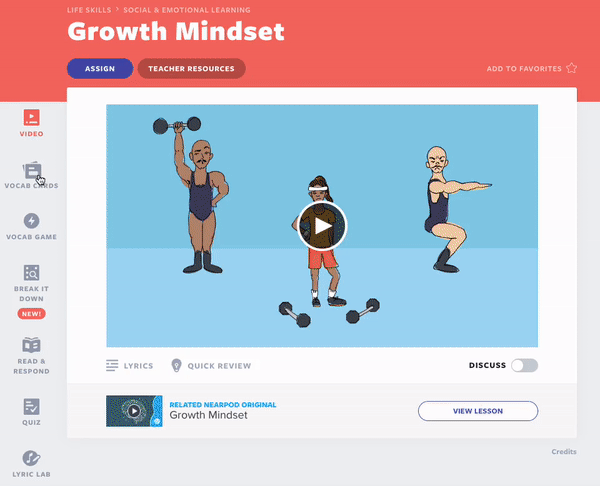
When I travel and speak with educators of all grade levels and areas of expertise, I stress how important it is for their students to see them attempting to engage in a Lyric Lab activity. Through Lyric Lab, students demonstrate their understanding of vocabulary and enhance their writing skills by creating their own raps about the content using hip-hop instrumentals. This allows students to deepen their thinking and take ownership of their learning. The worst that can happen is you fail at singing and rapping, getting a good laugh, making a new friend, and passing along the courage for students to know it’s alright if you’re not good at it. In the best-case scenario, you show your students a talent they didn’t know you possessed. All and all, you’re building positive relationships while encouraging a growth mindset.
5. Build community
Where you teach elementary, middle school, or high school, building classroom community promotes collaboration, teamwork, and peer support. Teachers should regularly engage in cooperative student learning activities, group projects, and discussions and encourage them to work towards a common goal in the classroom environment.
In Flocabulary, our Discuss Mode feature in each video activity is an excellent way to generate great discussions among students—all teachers need to do is turn on the Discuss Mode button located in the bottom right panel of every Flocabulary video and let the students take it from there. If you want to address a specific topic during class morning meetings, use a Flocabulary lesson as springboard for discussion.
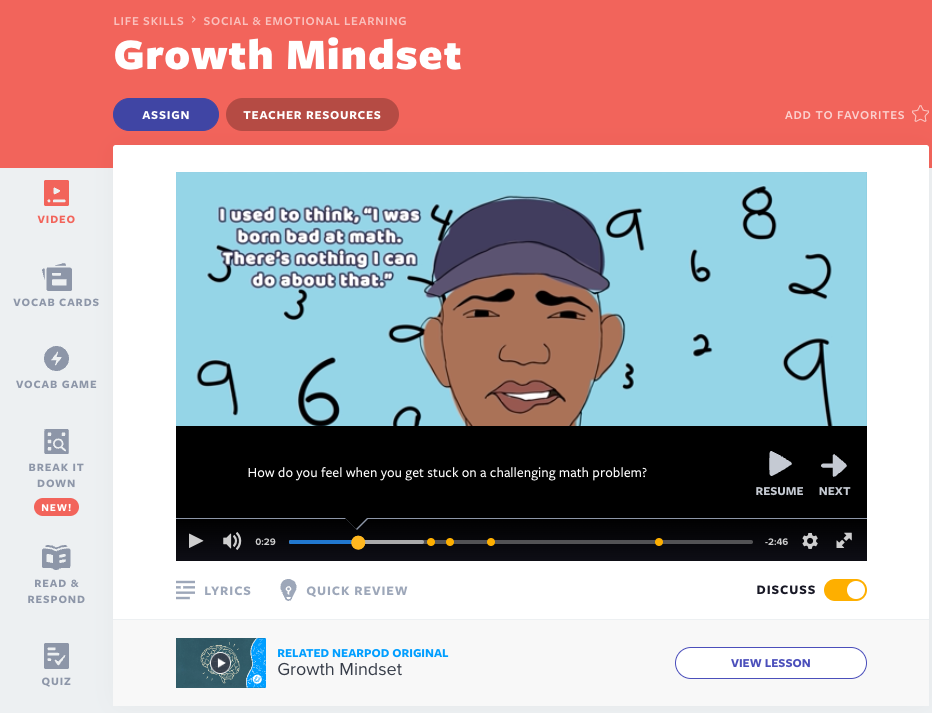
Videos can be played so they automatically stop and post a question pertaining to the lesson so students engage in either one-on-one “elbow partner” style, small groups, or classroom-wide discussions. Each question embedded in our videos is purposely designed to promote dialogue and not be answered with a simple “yes” or “no” response.
Intentionally designed for students to practice speaking in front of their peers, Flocabulary promotes a safe space where students feel they’re being listened to and learning to become better listeners. This can be useful for promoting acts of kindness, improving classroom climate, encouraging positive behavior, and developing problem solving skills.
This all ties back to building a positive and strong community of motivated learners. It’s highly recommended teachers negotiate terms on how students communicate with one another in this learning community while continually working on strategies to improve students’ overall academic and social performance.
6. Culture-building activities
Bringing fun and engaging community building activities is what educational games, technology, and creative projects are all about. Use these tools to allow students to apply their knowledge and skills in meaningful ways. This is where students are able to double down in sharing their interests, talents, and hobbies to foster a sense of enthusiasm and engagement as they traverse the pathway to learning.
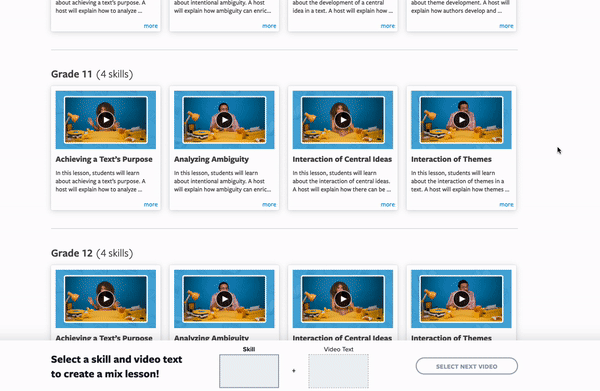
Flocabulary had culture-building activities in mind from day one, and it shows in all that we offer students exposed to our platform. The Vocab Game, Lyric Lab, as well as our Mixes, which are part of the Flocabulary Plus subscription, all deliver when it comes to making learning authentically engaging. Flocabulary Mix has a more formal approach to learning; students and teachers have fun while combining comprehension skills specific to their grade level.
Explore classroom culture activities with Flocabulary
In conclusion, remember that creating a positive classroom culture is an ongoing process that requires teachers to be intentional and consistent while having a genuine commitment to the well-being and success of every student.
By building relationships, setting clear expectations, open communication, emphasis on a growth mindset, building community, and bringing fun and engaging activities to students, teachers are well on the way to helping build a positive classroom environment where students become contributing citizens—and that’s truly how we make the world a better place.
New to Flocabulary? Teachers can sign up for a trial to access our lesson videos and assessment activities. Administrators can get in touch with us to learn more about unlocking the full power of Flocabulary through Flocabulary Plus.
